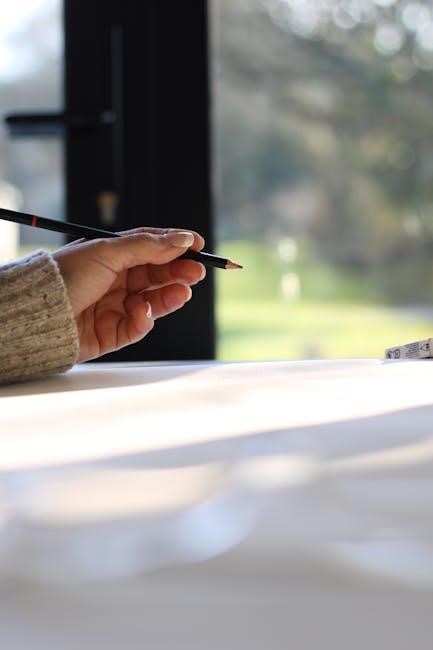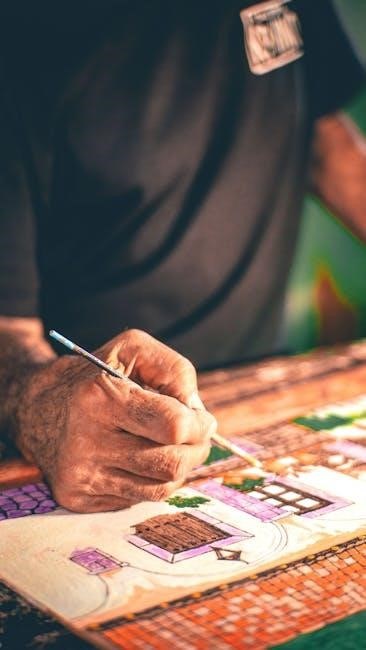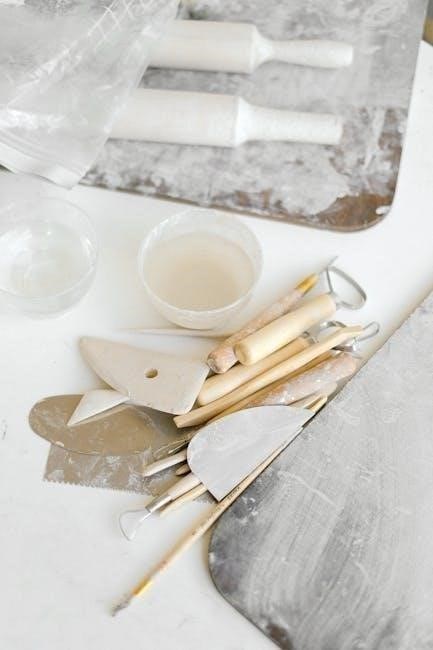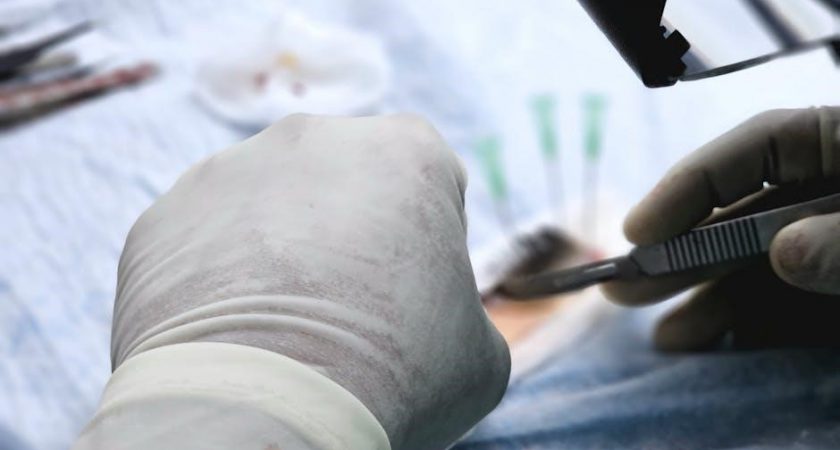Hand exercises are crucial for stroke recovery, helping restore motor skills, dexterity, and independence. Consistent practice enhances grip strength, finger movement, and overall hand function, aiding daily activities.
1.1 Importance of Hand Rehabilitation After Stroke
Hand rehabilitation is vital for restoring motor function, independence, and quality of life after a stroke. It helps improve dexterity, strength, and coordination, enabling patients to perform daily activities. Early intervention with exercises like passive movements and active exercises can prevent stiffness and promote neural recovery. Consistent practice, even with the unaffected hand assisting, fosters meaningful progress and long-term independence in personal care and functional tasks.
1.2 Benefits of Regular Hand Exercises
Regular hand exercises enhance strength, flexibility, and coordination, aiding stroke recovery. They improve grip strength, reduce stiffness, and restore fine motor skills. Consistent practice boosts independence in daily tasks like writing and using utensils. Exercises also promote neural plasticity, helping the brain adapt and recover. Over time, patients regain control and confidence, improving overall quality of life and functional abilities.

Types of Hand Exercises for Stroke Recovery
Hand exercises for stroke recovery include passive and active movements. Passive exercises involve assistance, while active exercises are performed independently, both aiding in regaining hand function and dexterity.
2.1 Passive Hand Exercises
Passive hand exercises involve a therapist or caregiver assisting the patient in moving their hands without active participation. These exercises help maintain joint mobility, prevent stiffness, and promote blood flow. Gentle finger bends, wrist rotations, and thumb movements are common techniques. They are particularly beneficial for patients with severe weakness or limited voluntary movement, ensuring the hand remains flexible and functional during recovery.
2.2 Active Hand Exercises
Active hand exercises require patients to use their own muscle strength to perform movements, enhancing motor control and dexterity. Examples include grasping and releasing objects, finger extensions, and wrist rotations. These exercises are tailored to the patient’s strength level and progress gradually. They improve coordination, reduce spasticity, and promote functional independence. Regular practice helps stroke survivors regain the ability to perform daily tasks like writing or using utensils effectively.

Fine Motor Skill Development Exercises
Fine motor exercises target finger dexterity and coordination, essential for tasks like writing or using utensils. Activities include finger isolation, grip strengthening, and therapy putty workouts, enhancing hand functionality and recovery.
3.1 Finger Isolation Exercises
Finger isolation exercises involve moving each finger independently to improve dexterity and coordination. Patients use their unaffected hand to stabilize others, focusing on bending or straightening one finger at a time. This enhances motor control, reducing spasticity and improving fine motor skills. Regular practice helps restore the ability to perform daily tasks like writing or using utensils, promoting independence and overall hand functionality. Consistency is key for optimal recovery.
3.2 Grip Strengthening Activities
Grip strengthening activities, such as squeezing a ball or stress ball, improve hand function and dexterity. Patients practice holding and releasing objects of varying sizes and textures to enhance grip control. Using therapy putty or resistance tools also builds finger and thumb strength, aiding in tasks like grasping utensils or opening jars. Regular practice fosters independence in daily activities, promoting overall hand recovery and motor skill development.

Therapy Putty Exercises for Hand Rehabilitation
Therapy putty exercises improve grip strength and motor function through squeezing, stretching, and shaping activities. They enhance finger dexterity and coordination, aiding in hand recovery and daily tasks.
4.1 Using Therapy Putty for Grip Strength
Therapy putty is a versatile tool for improving grip strength after a stroke. Patients can squeeze, roll, and shape the putty to enhance finger function and dexterity. Starting with soft putty, individuals gradually progress to firmer textures as strength improves. This exercise helps restore the ability to grasp and hold objects, essential for daily activities. A therapist or caregiver can guide the process to ensure proper technique and consistency.
4.2 Progressive Resistance Exercises with Putty
Progressive resistance exercises with therapy putty involve gradually increasing the resistance to strengthen hand muscles. Start with soft putty and move to firmer textures as grip strength improves. Patients can perform exercises like squeezing, stretching, and rolling the putty. This method enhances muscle endurance, finger dexterity, and overall hand function. Consistent practice helps restore the ability to perform daily tasks requiring a firm grasp.
Mirror Therapy for Hand Recovery
Mirror therapy uses a mirror to create the illusion of normal movement in the affected hand, enhancing neural recovery and improving motor function in stroke patients.
5.1 What is Mirror Therapy?
Mirror therapy is a rehabilitation technique where a mirror is placed to reflect the unaffected hand, creating the illusion of movement in the affected hand. This visual feedback tricks the brain into thinking both hands are moving, promoting neural plasticity and recovery. It helps improve motor function, reduces muscle stiffness, and enhances coordination in stroke patients. Regular practice can lead to significant improvements in hand mobility and dexterity over time.
5.2 How to Perform Mirror Therapy Exercises
Position a mirror in front of you, aligning it to reflect your unaffected hand. Perform slow, deliberate movements with your unaffected hand, such as finger bends or grasping objects, while focusing on the reflection. This creates the illusion of the affected hand moving, stimulating brain activity. Repeat exercises 10-15 times daily, gradually increasing complexity. Consistency enhances neural adaptation and motor recovery. A therapist can guide optimal techniques.

Strengthening Exercises for the Wrist and Fingers
Strengthening exercises improve wrist and finger mobility, enhancing dexterity. Use therapy putty or resistance bands for grip and flexion. Practice daily to support daily activities and recovery.
6.1 Wrist Extension and Flexion Exercises
Wrist extension and flexion exercises involve moving the wrist upward and downward. Sit with your arm supported on a table, palm down. Use your unaffected hand to gently assist the affected wrist through full range of motion. Resistance bands or light weights can enhance strength. Perform 3 sets of 10-15 repetitions daily to improve wrist mobility and strength. A therapist may also provide passive exercises if active movement is challenging.
6.2 Finger Extension and Flexion Exercises
Finger extension and flexion exercises focus on improving finger mobility. Sit with your arm supported, palm down. Extend fingers fully, then gently curl them into a fist. Use your unaffected hand to assist if needed. Repeat for 10-15 repetitions in 3 sets daily. Towels or resistance bands can add gentle resistance to enhance strength and flexibility. These exercises help restore finger movement and dexterity for daily tasks.

Incorporating Daily Activities into Hand Exercises
Daily activities like using utensils, writing, and manipulating objects can serve as effective exercises. These tasks enhance dexterity, strength, and coordination, making hand function more functional and natural.
7.1 Using Utensils and Tools
Using utensils and tools is an effective way to improve hand function after a stroke. Activities like holding a spoon, using a pen, or manipulating small objects enhance dexterity and coordination. These exercises can be incorporated into daily routines, promoting independence and practical skill recovery. They are simple, functional, and can be performed at home, making them ideal for consistent practice and rehabilitation progress.
7.2 Writing and Drawing Exercises

Writing and drawing exercises are excellent for improving hand dexterity and coordination after a stroke. Activities like tracing shapes, writing sentences, or drawing patterns help restore fine motor skills. Using a pen or pencil enhances finger control and precision. These exercises also promote cognitive engagement and can be adapted to individual skill levels, making them a valuable addition to daily rehabilitation routines for stroke patients.

Technology in Hand Rehabilitation
Technology enhances hand rehabilitation through apps and devices that guide exercises and monitor progress. Tools like Kinect and AR offer interactive solutions for stroke recovery, improving motor skills effectively;
8.1 Apps for Hand Exercise Guidance
Apps like GRASP and others provide interactive guides for hand exercises, offering video tutorials, progress tracking, and customizable routines. These tools enhance engagement and ensure proper technique, aiding stroke patients in performing exercises accurately at home. They often include reminders and motivational features to encourage consistent practice, making rehabilitation more accessible and effective for individuals recovering from stroke.
8.2 Devices for Monitoring Progress
Devices like wearable sensors and motion-capture systems track hand movement progress, providing real-time feedback. These tools measure range of motion, strength, and dexterity, helping patients and therapists assess improvements. Some devices integrate with apps, offering detailed reports and personalized recommendations. They enhance accountability and motivation, ensuring consistent practice and tailored rehabilitation plans for optimal recovery outcomes in stroke patients.

Avoiding Common Mistakes in Hand Exercises
Wearable sensors and motion-capture systems track hand movement, providing real-time feedback on progress. These devices measure range of motion, strength, and dexterity, helping patients and therapists assess improvements. They often integrate with apps, offering detailed reports and personalized recommendations to enhance rehabilitation efforts and ensure consistent practice for optimal recovery outcomes in stroke patients.
9.1 Overexertion and Pain
Overexertion during hand exercises can lead to muscle fatigue, pain, and delayed recovery. Patients should avoid forcing movements beyond a comfortable range, as this may cause injury or discomfort. Gentle, controlled motions are essential to prevent strain. If pain occurs, exercises should be paused, and a healthcare professional consulted. Consistent, moderate practice fosters progress without risking setbacks, ensuring safe and effective rehabilitation for stroke patients.
9.2 Ignoring Proper Technique
Ignoring proper technique during hand exercises can hinder recovery and lead to injury. Patients should avoid using their unaffected hand to force movements, as this may cause muscle imbalances. Correct form ensures targeted muscle engagement and prevents strain. Improper grip or finger positioning can also reduce exercise effectiveness. Always seek guidance from a therapist to maintain proper technique and maximize recovery benefits safely and effectively.
Consistent practice of hand exercises enhances stroke recovery, improving dexterity and independence. A structured approach with healthcare guidance ensures optimal progress and long-term benefits for patients.
10.1 Summary of Key Exercises
Key exercises include finger isolation, grip strengthening, and wrist movements. Mirror therapy and therapy putty activities enhance dexterity and coordination. Passive and active exercises promote flexibility and strength. Consistent practice, along with professional guidance, ensures effective recovery and improved hand function for stroke patients.
10.2 Encouraging Consistency in Practice
Consistency is key to effective hand rehabilitation. Establish a daily routine, even for short durations, to build strength and coordination. Involve family or caregivers for support and accountability. Use reminders or apps to track progress. Celebrate small achievements to stay motivated and maintain commitment to regular practice.
